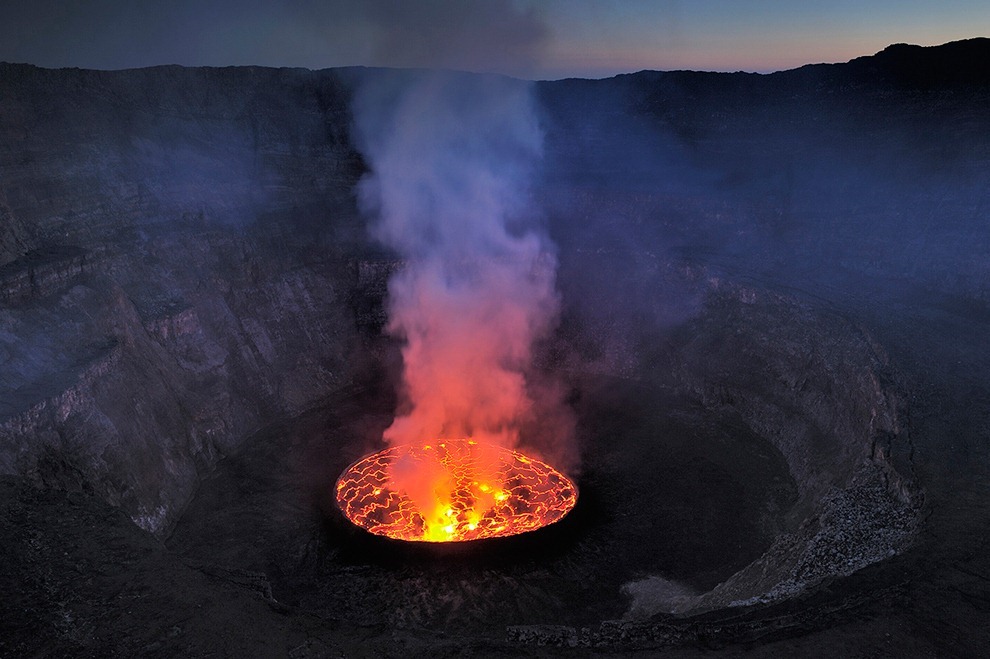Volcanologists often describe lava lakes as windows into the heart of volcanoes.
The lava lake of Mount Nyiragongo.
Photo credit:Olivier Grunewald/Boston.com
There are only a handful of persistent lava lakes in the world.
The most famous lava lake is the one onMount Nyiragongo, in the Democratic Republic of the Congo.
The lake is about 1.2 km across, the largest in existence, and is about 600 meters deep.
It is not known when the lava lake formed, but the volcano has been erupting since 1882.
Another major eruption occurred in 2002.
Fortunately, warnings had been given and 400,000 people were evacuated.
Still 147 people died from asphyxiation and buildings collapsing.

The lava lake of Mount Nyiragongo.
Erta Ale is only 613 meters high, but the elongated caldera is 1.7 km long.
Within this caldera are numerous lava flows and several larger and smaller pit craters.
One of these craters, sometimes two, contains lava lakes.
The lava lake is known to exist since the 1960s
The lava lake of Erta Ale.
Photo credit:Indrik myneur/Flickr
The lava lake of Erta Ale.
Photo credit:filippo_jean/Flickr
The lava lake of Erta Ale.
Photo credit:Raul Soler/Flickr
The lava lake of Erta Ale.
Photo credit:V/Flickr
The lava lake of Erta Ale.
The caldera is 12 km wide and is believed to have formed about 1,900 years ago.
There are two vents in the caldera that have become large complex craters called Marum and Benbow.
Both contains small lava lakes, which occasionally erupt lava flows onto the caldera floor.
The lava lake on Marum crater.
Photo credit:Geophile71/Wikimedia
The lava lake of Ambrym volcano.
The caldera on the summit of Mount Erebus is elliptical having diameters of 500 meters and 600 meters.
It contains an active lava lake within a second caldera that is 250 meters wide and 100 meters deep.
The lava lake itself has existed since 1972.
The lava lake of Mount Erebus.
The lava lake in Puu Oo crater.
Photo credit:J.D.
Griggs/Wikimedia
The Kilauea lava lake.
Photo credit:U.S. Geological Survey/Flickr













